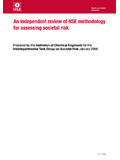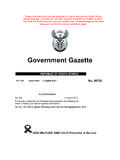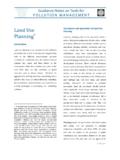Transcription of HSES LAND USE PLANNING METHODOLOGY - …
1 HSE S land USE PLANNING METHODOLOGY Contents Introduction Background to HSE s involvement in land use PLANNING The principles behind HSE s land use PLANNING METHODOLOGY HSE s PLANNING Advice Web App What HSE s METHODOLOGY does not deal with When to consult HSE How HSE s advice is determined HSE Consultation distances and consultation zones Development details Identifying developments Assessing developments Decision matrix Introduction to Sensitivity Levels Development Type Tables Additional rules and how they are applied Rule 1 straddling developments Rule 2 Multiple major hazards Rule 3 Multiple use developments Rule 4 Developments which involve a small extension to an existing facility Rule 5 temporary/time limited permissions Glossary Annex 1 - HSE s land use PLANNING advice provision Annex 2 - Types of development to consult on under the Town and Country PLANNING (Development Management Procedure) (England)
2 Order 2015, the Town and Country PLANNING (Development Management Procedure) (Wales) Order 2012 and the Town and Country PLANNING (Development Management Procedure) (Scotland) Regulations 2013 Annex 3 - HSE S approach to land use PLANNING Annex 4 - Contact Introduction 1. The Health and Safety Executive (HSE) is a statutory consultee on certain developments in the vicinity of major hazard sites and major accident hazard pipelines. HSE s land use PLANNING (LUP) advice is based on the METHODOLOGY set out in this document, and in the majority of cases HSE s advice is provided through HSE s PLANNING Advice Web App.
3 Background to HSE s involvement in land use PLANNING 2. Major accidents at sites storing hazardous substances are rare, but when they do happen the effects on people living nearby can be devastating. This became apparent following the Flixborough incident in the UK in 1974, more recently at Buncefield in 2005 and across Europe for example at Enschede in The Netherlands in 2000. HSE first offered advice to PLANNING Authorities (PA) in 1972 and this was introduced across the EU by the 1996 Seveso II Directive, which was replaced in 2012 by the Seveso III Directive (See Annex 1).
4 The simple aim is to manage population growth close to such sites to mitigate the consequences of a major accident. 3. HSE sets a consultation distance (CD) around major hazard sites and major accident hazard pipelines after assessing the risks and likely effects of major accidents at the major hazard. Major hazards comprise a wide range of chemical process sites, fuel and chemical storage sites, and pipelines. The CDs are based on available scientific knowledge using hazard /risk assessment models updated as new knowledge comes to light.
5 Major accidents are also closely studied. The PA is notified of this CD and has a statutory duty to consult HSE on certain proposed developments within it (see Annex 2), and this should be done through HSE s PLANNING Advice Web App. HSE s response will be that HSE either advises against or does not advise against the granting of PLANNING permission on safety grounds that arise from the possible consequences of a major accident at the major hazard. The PA must take this advice into account when they make a decision on the PLANNING application.
6 4. PAs have consulted HSE for many years on PLANNING applications and proposed developments within the CD of major hazards. In 2006/2007, HSE provided PAs with direct on-line access to a software decision support tool known as PADHI+ ( PLANNING Advice for Developments near Hazardous Installations), based on HSE s METHODOLOGY , for them to use to consult HSE for advice on the majority of PLANNING applications rather than having to contact HSE directly. 5. In 2015, PADHI+ was replaced by the HSE PLANNING Advice Web App, which PAs should now use to consult HSE for advice.
7 The Web App is also available to developers to use to identify if a proposed development site lies within the CD of a major hazard; if it does, they can also use the Web App to obtain HSE s pre-application advice on their proposal, although there is a charge for that particular service. 6. For more background information see Annex 1 HSE s land use PLANNING advice provision. The principles behind HSE s land use PLANNING METHODOLOGY 7. HSE s land use PLANNING METHODOLOGY is based on the following principles: The risk considered is the residual risk which remains after all reasonably practicable preventative measures have been taken to ensure compliance with the requirements of the Health and Safety at Work etc.
8 Act 1974 and its relevant statutory provisions. Where it is beneficial to do so, advice takes account of risk as well as hazard, that is the likelihood of an accident as well as its consequences. Account is taken of the size and nature of the proposed development, the inherent vulnerability of the exposed population and the ease of evacuation or other emergency procedures for the type of development proposed. Some categories of development ( schools and hospitals) are regarded as more sensitive than others ( light industrial) and advice is weighted accordingly.
9 Consideration of the risk of serious injury, including that of fatality, attaching weight to the risk where a proposed development might result in a large number of casualties in the event of an accident. HSE s PLANNING Advice Web App 8. The HSE PLANNING Advice Web App is the name given to the software used to provide HSE s LUP advice to PAs on proposed developments near major hazard sites and major accident hazard pipelines. It replaced PADHI+ in 2015, and uses the METHODOLOGY which HSE has used since 2002, which codified the principles used by HSE in providing LUP advice since the1970s.
10 9. HSE s PLANNING Advice Web App can also be used by PAs and developers to obtain HSE s advice on a pre- PLANNING enquiry (PPE) provided sufficient information is available. Developers will be charged for that service. Any decision on a PPE will be conditional on the assessment of the formal PLANNING application which will be made using the information that is appropriate and relevant when HSE is consulted by the PA. 10. Very exceptionally there may be cases of development where the use of HSE s PLANNING Advice Web App alone is inappropriate and HSE will take account of wider factors so that the usual criteria can be usefully complemented.
















